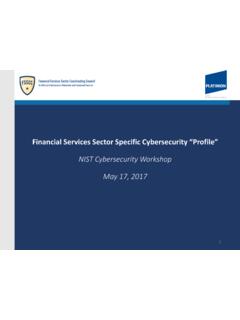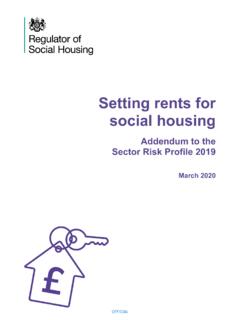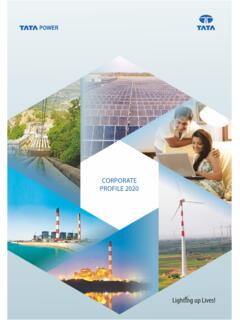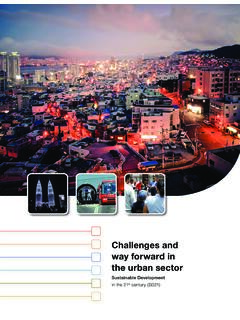Transcription of 100% percent Electricity Generation through Renewable ...
1 100% Electricity Generation . through Renewable ENERGY BY 2050. Assessment of Sri Lanka's Power sector Empowered lives. Resilient nations. Contact Information Mr. Harsha Wickramasinghe, Sustainable Energy Authority, Dr. Priyantha Wijayatunga, Dr. Alexandra Soezer, For questions or comments with respect to content, or for permission to use the ADB logo, please contact Technical Oversight and Guidance Dr. Alexandra Soezer, UNDP LECB. Darshak Mehta, sector Advisory Services (Consultant), Asian Development Bank Lead Author Manpreet Singh (KPMG India). Authors Sandip Keswani (KPMG India), Puneet Chitkara (KPMG India), Ranjani Joseph (KPMG India), Himadri Singha (KPMG India), Shouvik Sen (KPMG India), Gaurav Mahindru (KPMG India), Vedamitra Rao (KPMG India), Pyumi Sumanasekaran (KPMG India), and Ninzer Shazaad (KPMG India).
2 Lead Reviewer Dr. Priyantha Wijayatunga (Asian Development Bank). Reviewers Hemashantha (Sri Lanka Carbon Fund), Milou Beerepoot (United Nations Development Program), and Dan Millison (Asian Development Bank). Acknowledgements This study benefitted from valuable assistance with data collection, insightful stakeholder views and expert opinions, including from: Wickramaratne and Harsha Wickramasinghe (Sri Lanka Sustainable Energy Authority), Dr. Wijekoon and Buddhika Samarasekara (Ceylon Electricity Board), Damitha Kumarasinghe and Gamini Sarathchandra (Public Utilities Commission of Sri Lanka), Ranishka Wimalasena (Asian Development Bank), Sameera Gunawardena (Panasian Power Plc).
3 David Elzinga (Asian Development Bank), Silver Navarro (Asian Development Bank), and Mr. Sulakshana Jayawardena (Ministry of Power and Renewable Energy, Sri Lanka). Editor Georgina Wilde Design Kimberly Koserowski Empowered lives. Resilient nations. 100% Electricity Generation . through Renewable ENERGY BY 2050. Assessment of Sri Lanka's Power sector Co-publication of the Asian Development Bank and the United Nations Development Programme This is a co-publication of Asian Development Bank and United Nations Development Programme. The designation of the materials in this publication do not imply the expression of any opinion whatsoever on the part of the Secretariat of the United Nations, UNDP, ADB or its Board of Governors or the governments they represent concerning the legal status of any country, territory, city or area, or of its authorities, or concerning the delimitation of its frontiers or boundaries.
4 The content and views expressed in this publication are those of the authors and do not necessarily reflect the views or policies or carry the endorsement of the copublishing organizations. The copublishing organizations do not guarantee the accuracy of the data included in this publication and accept no responsibility for any consequence of their use. 2017 Asian Development Bank, and United Nations Development Programme All rights reserved. Published in 2017. ADB and UNDP encourage printing or copying information exclusively for personal and non-commercial use with proper acknowledgment of ADB and UNDP.
5 Users are restricted from reselling, redistributing, or creating derivative works for commercial purposes without the express, written consent of UNDP. Also available online at: 100% Electricity Generation through Renewable ENERGY BY 2050 ASSESSMENT OF SRI LANKA'S POWER sector . FOREWORD. I am pleased to introduce a new study on Assessment of Sri Lanka's Power sector - 100% percent Electricity Generation through Renewable Energy by 2050, jointly published by the United Nations Development Programme (UNDP) and the Asia Development Bank (ADB). The study will contribute towards the realisation of Sri Lanka's 100% Renewable Electricity targets by 2050 of which Sri Lanka's not yet released Long Term Generation Expansion Plan (2018 - 2037) is an important step.
6 The Expansion Plan has been developed by the Ceylon Electricity Board (CEB). Sri Lanka has already made significant progress in the Electricity sector , four major achievements are: Reaching this ambitious goal will, however, require achieving progressively deeper cuts in greenhouse gas emissions. Electricity Generation is increased 4 times between period of 1992 to 20161. Electricity access has reached from just about 50% in 1990 to 100% of the population by end of 2016. Technical loss in Transmission and distribution is less than 10%2 implying an efficient operation Establishment of an independent regulatory body for Electricity sector utilities The real challenge going forward lies in creating a de-risked policy environment and innovative financial models and practices to attract investment at scale in the sector .
7 The joint study by UNDP and ADB will serve as a robust foundation for Sri Lanka's Long Term Generation Expansion Plan and builds on successes in the sector . I welcome a continued close collaboration between energy experts from Sri Lanka, UNDP and ADB with the goal to identify a robust sustainable, holistic development pathway. For this, it will be important to assess different sectoral development scenarios, understand the needs for additional technical infrastructure, while aiming for a true paradigm shift that builds on global experiences. I think that the world is at a turning point in terms of utilization of new sources of energy, new ways of energy delivery and new energy uses.
8 Considering the demography, economy and current energy uses, Sri Lanka is uniquely positioned to spearhead cutting edge research and development for a zero carbon future. In this context, I am happy to welcome ADB and UNDP to further the interest of Sri Lanka. Sincerely, Dr. Batagoda Secretary to the Ministry of Power & Renewable Energy, Sri Lanka 1 /05/LTGEP 2018-2037 .pdf Section 2 /05/LTGEP 2018-2037 .pdf figure FOREWORD. FOREWORD. The adoption of the Paris climate agreement in 2015 marks not only an historic milestone for the global effort to combat climate change but also sets an important signal for accelerated climate action and a dramatic transformation of economies as we know them.
9 As laid out in their visions and commitments on climate change, UNDP and the Asia Development Bank strongly support the goal of enabling climate-resilient, low-emission development with the objective of transitioning to resilient zero-carbon growth by the end of the century. In the strongest ever collective spirit, 195 countries came forward with national plans, or intended Nationally Determined Contributions (INDCs), to outline targets for cutting greenhouse gas (GHG) emissions, many of which included climate adaptation targets and strong references to social inclusion, especially gender equality.
10 These national contribution targets culminated into the Paris Agreement which set the highly ambitious - but vital - global goal to limit temperature increases to well below 2 C and transition to a zero- carbon economy by the end of the century. Reaching this ambitious goal will, however, require achieving progressively deeper cuts in greenhouse gas emissions. In this context, Sri Lanka as one of the countries disproportionately affected by climate change has agreed to ambitious Renewable Electricity Generation targets by 2050. Sri Lanka is among the 43 countries of the Climate Vulnerable Forum that agreed to make their Electricity Generation 100 per cent Renewable as rapidly as possible and by 2050 at the latest.

















